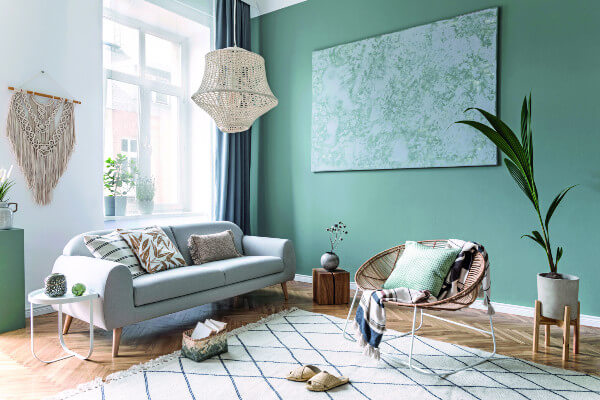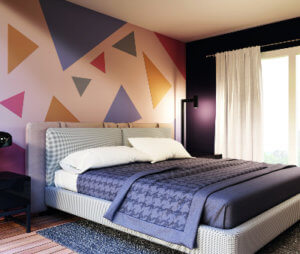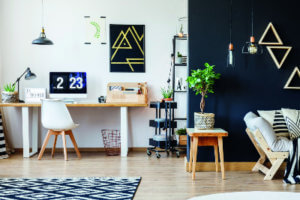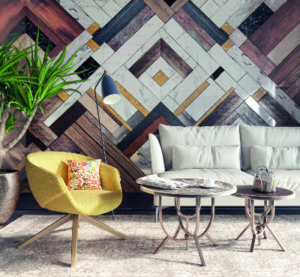Wall to Wall

Why the cult of the feature wall is back in fashion
Around the turn of the Millennium, we found ourselves confronted with a new dawn, with new realities. There were mobile phones, tablet computers and, perhaps best of all, the ‘feature wall’.
The term, otherwise known as an ‘accent wall’, invited home interior design experimenters to thrown caution to the wind in giving one side of a room a new lease of life, either through repainting or wallpapering in a different colour.
The feature wall concept therefore became a go-to idea, be that for bedrooms, living spaces or even kitchens. They were regarded as a great way of redesigning a space without making a big investment – a day’s worth of work that would transform a room for years to come; or perhaps just a few months, depending on your desire to keep reinventing what could quickly become a versatile and adaptable space.
As the Noughties progressed though, our desire to stand out became less prevalent, and tastes merged rather more towards flat colours and drops of detail, rather than one big, brave, statement wall.
And yet, here in 2021, the whispers are that the feature wall is about to make a triumphant return. In interior design, just as in fashion, it’s supposed that a period of repression and confinement – such as the one we’re still living through in wake of the Covid-19 pandemic – does unusual things to the human psyche, causing us to break free, experiment, and cast aside formality.
With that in mind then, if you feel your route back to finding yourself might begin with a roll of wallpaper or a pot of paint, here are some golden rules to follow:
ONE
Complement, don’t confuse
The temptation with a feature wall is to bring about a complete shift in focus from the rest of the room, but in actual fact even the subtlest of changes will make a big noise, given that this will be a standout wall, with all the others remaining the same.
So use colours and textures that feel different, but still work with existing colours, furniture, floor coverings and styles that are in the room.
TWO
Expose and expand
A feature wall works because it is a flat layer of space that imposes itself on the rest of the room. With that in mind, pick the wall that is the room’s focal point.

Remember too, you don’t want a space that is going to be crowded in pictures and decoration, or blocked by furniture, sofas and the like.
You’ll also want to think about where light enters the room – your preference should be for it to hit your feature wall, thus radiating all its statement gloriousness.
THREE
Space is the Place

A feature wall works best in a room that has space, which is why on most occasions the front room is chosen.
While it’s a nice idea that you can bring a study, small bedroom or boxroom to life with a spark of individuality, the reality is that using limited area for a feature wall will most likely only serve to make a small space even smaller.
FOUR
Living in a Material World
 It’s not just the colours you’re pursuing that are going to make an impression – let your materials do the work too.
It’s not just the colours you’re pursuing that are going to make an impression – let your materials do the work too.
Although wallpaper and paint are the preferred methods for giving a wall a new lease of life, there’s nothing to stop you using wood, cork, bamboo, tiles or even stone, if it means your feature wall in design can scale the expanses of your imagination!
